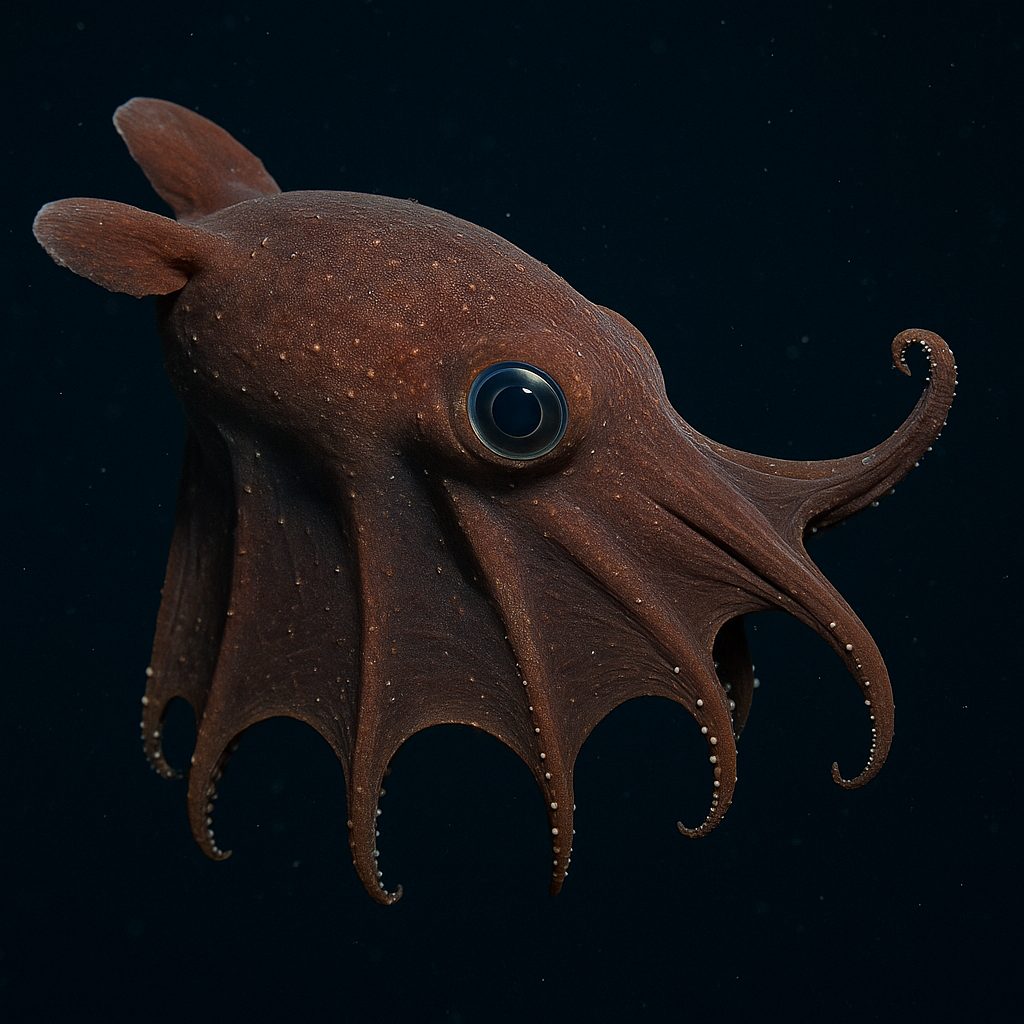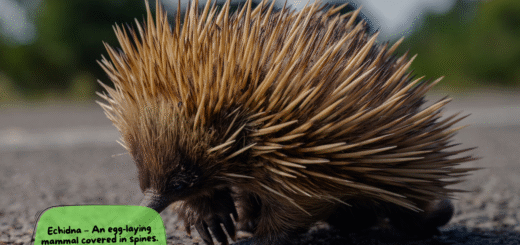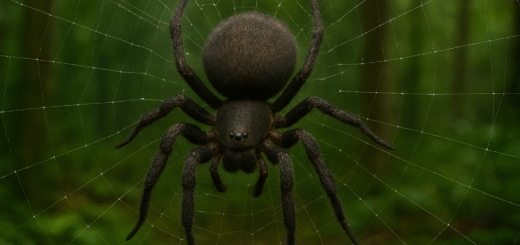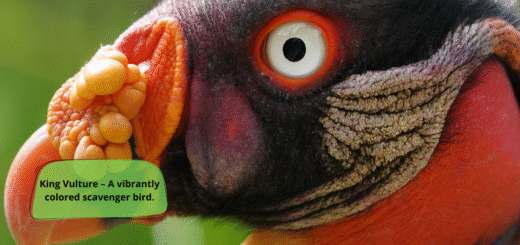Vampire Squid: The Deep-Sea Mystery of the Ocean
In the mysterious, dark depths of the ocean lives one of the most fascinating creatures in the marine world — the Vampire Squid (Vampyroteuthis infernalis). Despite its fearsome name, the Vampire Squid is not a bloodthirsty predator. Instead, it is a harmless deep-sea animal perfectly adapted to survive in one of the harshest environments on Earth. Let’s dive into the incredible world of this deep-sea marvel!

What Is a Vampire Squid?
The Vampire Squid is a small cephalopod, typically reaching about 12 inches (30 centimeters) in length. Unlike its squid and octopus cousins, the Vampire Squid has unique features that make it stand out:
- Webbed arms: It has eight arms connected by a dark, cloak-like webbing.
- Bioluminescence: The Vampire Squid can produce light from its body, helping it evade predators in the pitch-black ocean.
- Large blue eyes: In fact, relative to its body size, it has the largest eyes of any animal in the world!
Habitat: Where Do Vampire Squids Live?
Vampire Squids inhabit the oxygen minimum zone of the world’s oceans, typically at depths between 2,000 and 3,000 feet (600 to 900 meters). This zone has extremely low oxygen levels, where few animals can survive. The Vampire Squid’s slow metabolism and specialized gills allow it to thrive in this otherwise deadly environment.
Diet: What Does a Vampire Squid Eat?
Unlike its predatory cousins, the Vampire Squid is a detritivore. It feeds on “marine snow”—a mix of dead plankton, waste particles, and mucus that falls from the ocean’s upper layers. It uses sticky filaments, not found in true squids or octopuses, to capture food drifting by in the water.
Unique Features of the Vampire Squid
- Defense Mechanisms: When threatened, the Vampire Squid can turn itself inside out, exposing spiny projections on the inside of its arms, a behavior called a “defensive posture.”
- Light Show: Instead of squirting ink, the Vampire Squid releases clouds of bioluminescent mucus filled with glowing particles to confuse predators.
- Energy Efficient: Living in an environment with little food and oxygen, the Vampire Squid has one of the lowest metabolic rates of any cephalopod.
Why Is the Vampire Squid Important?
Studying the Vampire Squid provides valuable insights into how life can adapt to extreme conditions. As oceans change due to climate shifts, understanding creatures like the Vampire Squid could reveal important clues about survival in low-oxygen habitats.
Fun Facts About the Vampire Squid
- The name Vampyroteuthis infernalis literally means “vampire squid from hell“!
- It is the only living member of its order (Vampyromorphida), making it a true evolutionary relic.
- Its body is jelly-like and delicate, an adaptation to avoid damage under immense deep-sea pressure.
Conclusion
The Vampire Squid is a reminder of the ocean’s endless wonders. Far from being a terrifying monster, it is a peaceful scavenger that has mastered life in a world of darkness and scarcity. As scientists continue to explore the deep sea, the Vampire Squid stands out as one of nature’s most impressive survivors.
If you’re fascinated by deep-sea creatures, the Vampire Squid is a perfect example of adaptation, mystery, and beauty beneath the waves.








